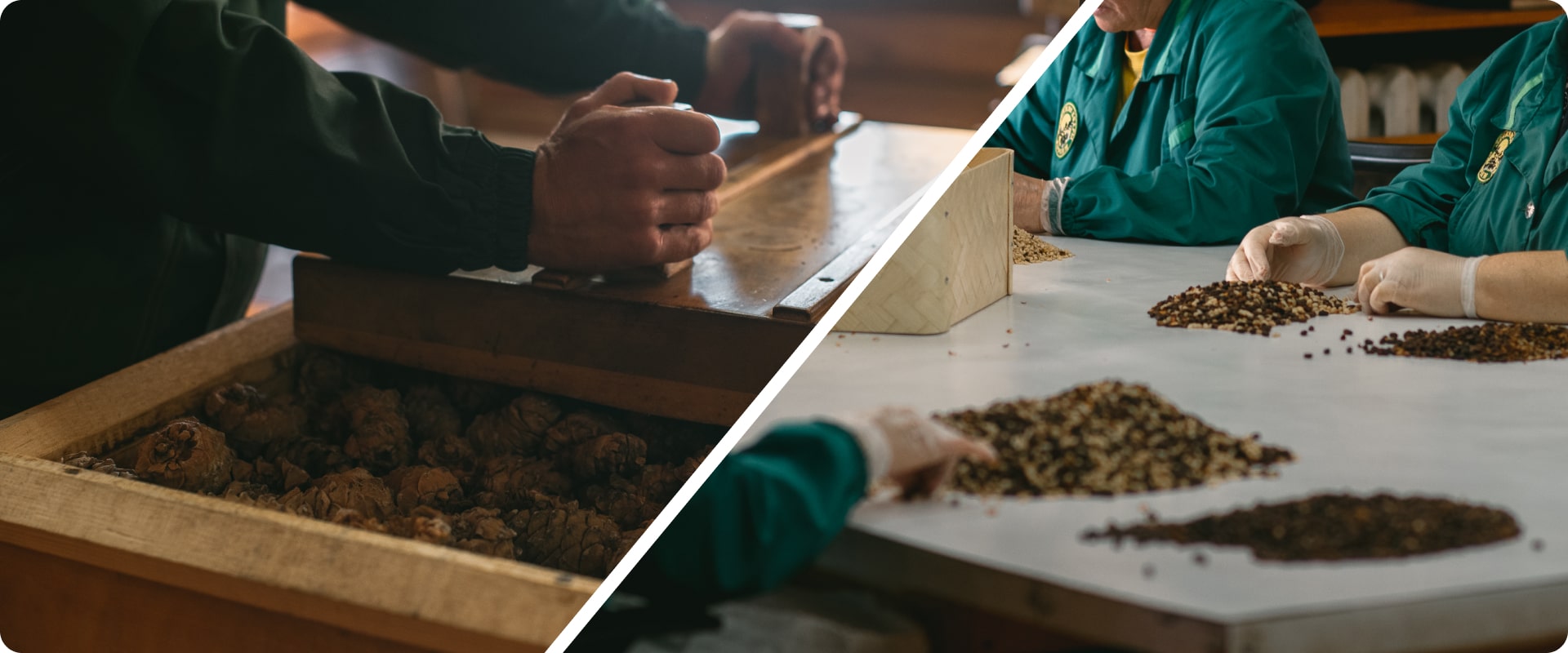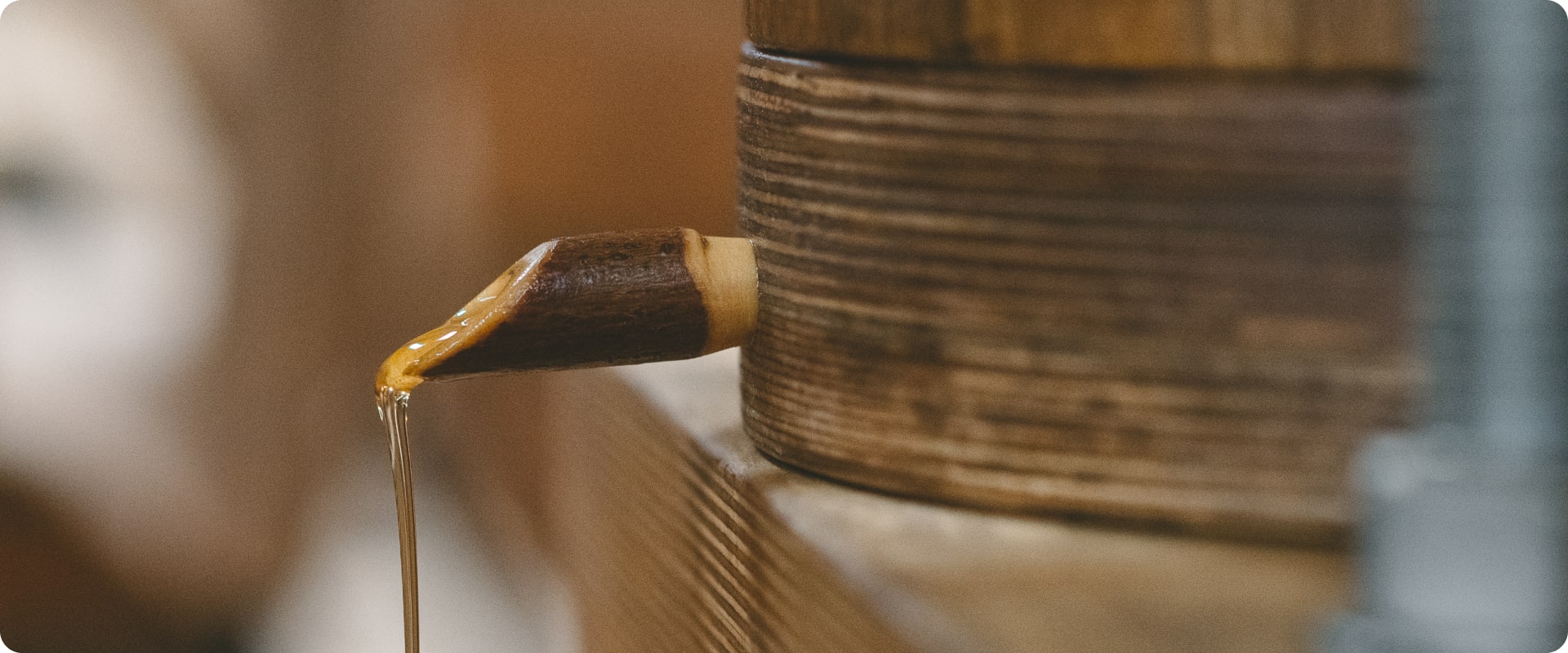Cedar oil is certainly a unique product that is popular due to its beneficial properties. In this article we will share our secrets of making this precious oil.
Collecting cones.
It all starts with collecting the cones. The tree blooms in May-June and the cones only ripen in September of the following year. Over the course of a year, they are saturated with the sun and the energy of the tree. Once the cedar begins to drop its cones to the ground on its own, it is then time to collect them.
Knocking or shaking the tree branches is pointless and dangerous. The unripe cone is strongly attached to the tree and in order to remove it, poachers will mercilessly hit the trunk of the tree. Not only does this cause damage to the tree, but such actions can even lead to the death of the cedar. Moreover, a knocked down immature cone does not contain any benefit.
A ripe cone that has just fallen from a tree has a bluish-violet color and is tightly wrapped in resin. After a week, it takes on its usual brown color, dries out and is filled with healing resin. But you cannot peel the cone right away, as is often done during industrial harvesting, because the ripening process is not yet complete.

How to store cedar cones?
It is important to remember that the cone is alive. It actively absorbs the energy of its surroundings, so all stages of production must take place away from the city so that the cone is saturated only with natural light energy.
Our Cedar House has become the place where all production processes are concentrated. And in 2017, we built a real home for the pine cone – a spacious two-story cedar barn, where it is stored in canvas bags and accumulates healing power. Such an environment, in which the pine cone absorbs the cedar spirit, the attention and care of people in production, strengthens and saturates it.

Crushing and processing
Processing or destruction of the cone occurs on special wooden equipment. The entire process must occur without contact with metal to avoid oxidation. To prevent contamination, the wooden surfaces of the equipment are coated with natural beeswax – a real natural varnish, nothing less. When processing the cedar nut core itself, contact with mechanisms is completely eliminated. This process is long and painstaking; if suddenly even one kernel with a minimal defect ends up in a container with a clean kernel, everything can rot and disappear.

The process of making cedar oil
Cedar oil, raw pressed is manufactured using technology that is as close as possible to the Siberian method that has existed since time immemorial. Our production process has been completely transferred to the Taiga. Although the use of mechanised labor is allowed in the destruction (processing) of the cone, most of the stages are performed manually. It is important to note that no thermal or chemical treatment is used during production; the cedar nut kernel is washed with water, which is infused in cedar barrels. Although this technique requires significant effort and expense, the result is still worth it.
Handmade cedar oil is of particular value . It has unique taste, color and energy properties that surprisingly distinguish it from other oils. One family takes part in the process of making this cedar oil, and only manual labor is allowed, without the use of electricity. They collect the cone, crush and sort the nut, and then pour the oil into bottles by hand. It is important to note that in this recipe the nut kernel is not washed in order to preserve the living cedar pollen, and is not dried. Because of this, more moisture remains in the nut, so handmade cedar oil is more liquid than our other oils. To ensure that all the valuable properties are preserved, after pressing, the oil is not allowed to settle – it is immediately poured into bottles. Therefore, the sediment that is in handmade oil is natural; it is a sign of quality.



